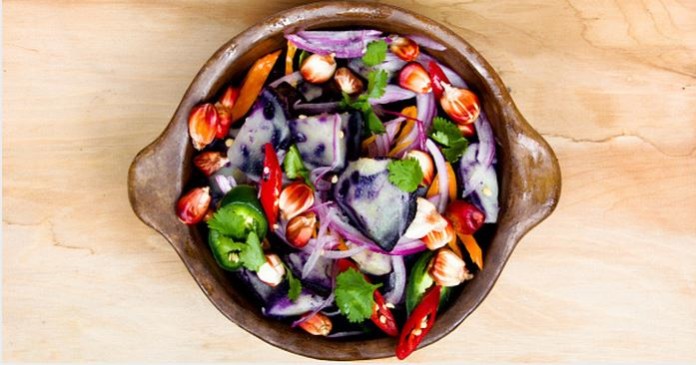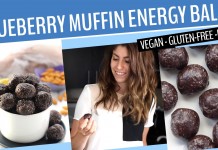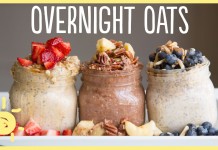Unhealthy Foods You Mistake as Healthy
I
have for you 9 foods swaps if you are looking to make some healthy changes in your diet. Some of these you may already be aware of but a few of these I didn’t realize that there were better alternatives. If you take away one thing from this information, that is that there is always a way to eat better and get more nutrition in your diet.
1. Pasta vs Spaghetti Squash
Eating spaghetti squash will help fill up your plate without adding a ton of calories. Each cup of the cooked squash contains only 42 calories – 2 percent of the daily calorie intake on a 1,500-calorie diet, or 1.5 percent of a 2,000-calorie diet. Due to the squash’s low calorie content, substituting spaghetti squash in place of spaghetti pasta dramatically reduces the calorie content of your meal; substituting a cup of squash in place of pasta saves you 179 calories. If you normally eat spaghetti once a week, the calorie difference in switching to spaghetti squash translates to 2.5 pounds of weight loss over the course of a year.
2. Skim Milk vs Almond, Hemp or Coconut Milk
Skim milk is fortified with synthetic vitamins to replace those lost in fat-removal and milk solids to replace the protein and calcium lost in processing. Just one cup of skim milk contains 90 calories and 12 grams of sugar.
Opt for unsweetened almond, coconut or hemp milk. The calories will be cut in half and without any sugar. They also won’t contain the nasty additives found in dairy milk.
3. Agave Nectar (refined sugar) vs Raw Honey
Though most health food stores carry it, the trendy sugar substitute, agave nectar, shockingly contains 70 to 80 percent fructose, which is more than what’s found in high-fructose corn syrup. Most agave is laboratory-generated super-condensed fructose syrup, without any nutrients.
Raw honey has anti-viral, antibacterial, and antifungal properties. It promotes body and digestive health, is a powerful antioxidant, strengthens the immune system, eliminates allergies and is an excellent remedy for skin wounds and all types of infections.
4. Sugar vs Cinnamon
Sugar cause inflammation and inflammation causes disease. It’s really that simple.
Cinnamon however, is full of amazing benefits, plus it’s so good! Ceylon cinnamon is the “true” cinnamon and the one you want to look for when shopping at the market.
It is high in a substance called cinnamaldehyde, which is responsible for it’s positive effects on health and metabolism. Cinnamon contains large amounts of highly potent polyphenol antioxidants. In a study that compared the antioxidant activity of 26 spices, cinnamon wound up as the clear winner, even outranking “superfoods” like garlic and oregano. It contains anti-inflammatory properties, which may help to lower the risk of illness and disease. Cinnamon has been shown to both reduce fasting blood sugar levels, having a potent anti-diabetic effect at 1 to 6 grams per day.
5. Sour Cream vs Greek Yogurt
Baked potatoes, creamy dips, tacos… sour cream is great! But you know what’s better for you? Greek yogurt!
Greek yogurt contains beneficial bacteria, good for gut and immune health. Of course, if you are someone who cannot tolerate dairy, stay away from yogurt and instead, try organic kefir. While this is technically still dairy, the amount of beneficial bacteria has been shown to actually help reverse lactose intolerance, making it easier to assimilate and digest quality dairy products. Always buy organic.
6. Store Bought Salad Dressings vs Olive Oil & Apple Cider Vinegar
These contain so many ingredients, like filler and added sugar. All totally unnecessary. Instead, drizzle some olive oil and ACV instead, maybe a sprinkle of celtic sea salt and you’ve got a great – and easy – dressing!
7. Iceberg Lettuce < Spinach, Chard, Kale, Romaine
The best thing about iceberg lettuce is it’s water content. Aside from that, there is not a whole lot of value to this barely green veggie (sorry, Iceberg). Choosing greens that are dark and vibrant pack a much more nutrient-dense punch, providing your body with tons of vitamins and minerals to fuel you towards optimal health.
8. Cheese vs Nutritional Yeast
Again, cheese is dairy and dairy creates inflammation in the body and is also mucus-forming. Try sprinkling nutritional yeast on items you’d typically sprinkle cheese on. Sure, it won’t give you the ooey-gooey texture of cheese, but it provides a very similar flavor.
Nutritional yeast contains B12, in addition to it being a “complete protein” – that just means it contains all the amino acids we must get from our food. It’s low in fat and sodium, is free of sugar and gluten and contains iron.
9. Banana vs Avocado
Bananas are great and provide a creamy texture in smoothies. But for those looking for a lower glycemic option, avocado provides the same creaminess and are a great source of vitamins K, C, B, E, folate, potassium (more than bananas!) and healthy fats, so great for metabolism, brain, heart and skin health as well as immunity.
Original article here
[ulp id=”I1Mr4xcccmiFLCrG”]












Definitely try spaghetti squash, it tastes even better than regular pasta and is so much more better for you!
I had no idea about iceberg lettuce. Thought all lettuce was good for you.